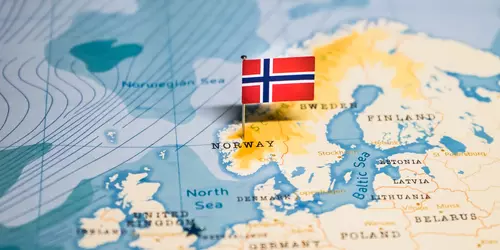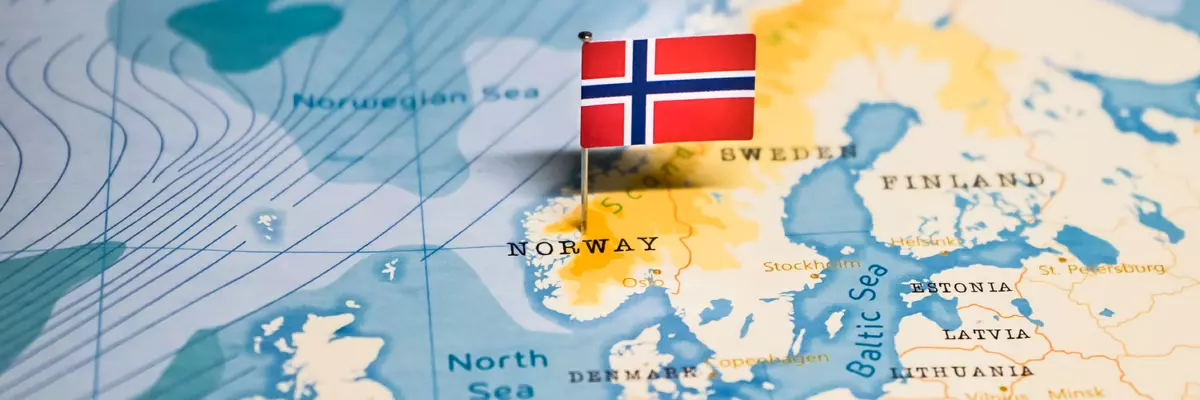
The climate year of Norway
The Kingdom of Norway with its cities Oslo, Bergen or Stavanger, its glaciers and plateaus is an interesting tourist country. It is located on the Scandinavian Peninsula west of Sweden and borders Finland and Russia to the northeast. The Skanden mountain range borders the narrow strip of Atlantic Ocean influenced by the Gulf Stream and separates it from the parts of the country in the east with a continental climate. Although the coastal strip lies far to the north, it has a mild and humid climate and the sea here is almost always ice-free. The Gulf Stream brings its warm waters to these latitudes and onshore winds keep air temperatures below -5°C throughout the winter.
The moisture from the onshore winds rains down on the west side of the mountains and much less precipitation falls on the lee side of the mountains. Precipitation also decreases from south to north, and the further inland you go, the less precipitation there is. Here, temperatures are significantly lower in winter than along the coast, but higher in summer. Summer and winter show a higher temperature difference in the interior than on the west coast.
General information about Norway
Fjords, romantic Hanseatic towns, spectacular nature and the North Cape are the significant sights in Norway. One of the most popular photo motifs is the Geirangerfjord. At the end of the fjord, on the Eagle Road, is the viewpoint Ørnevegen, from which you can see the "Seven Sisters" (7 waterfalls side by side), the town of Geiranger and Knivsfla mountain pasture.
The historic Bryggen Hanseatic Quarter in Bergen is also one of the most visited places in Norway. The colorfully whitewashed merchant houses date back to the 18th century and now house art exhibitions and souvenir stores. At the harbor, the Hanseatic Museum tells about the life of the merchants and in the Bryggen Museum you can see medieval finds.
The North Cape (landmark of Norway) is the northernmost point of Europe, where the sun never sets in summer. In the high season there is a shuttle bus to the cape, because the road is closed for the many cars.
Tourism Norway
The coldest months in Norway are January and February. Daytime highs in Bergen are 3.5°C with lots of rain - while in Oslo the highs are -2°C with snowfall. In March, winter storms can be expected on the coast and snowfall is still possible. In April, thaw finally sets in and temperatures rise to 9°C during the day. The many rains on the coast become less and it no longer snows. In May the fruit trees blossom at the Hardangerfjord and the mild temperatures between 14 and 16°C invite to stay outside.
But there are still big temperature differences between the northern and southern parts of the country. In June, temperatures in Oslo rise to highs of 20°C and 8.3 hours of sunshine. In July and August, the days are long and Oslo or Bergen can have highs of up to 25°C. The water temperature is around 18°C. September is colorful and it slowly gets colder again - still around 15°C on the coast, significantly colder inland.
October brings the first autumn storms and the sunshine hours drop to about 1.9 per day. Bergen still has daytime temperatures of about 10°C and a lot of rain, inland it is only about 7 - 8°C. In November and December snow falls everywhere in the country, except on the coast, but there is more often a storm, but it remains almost always frost-free. In Oslo, however, there is permafrost during these months. At the Arctic Circle and above, the temperature can drop to -40°C.

